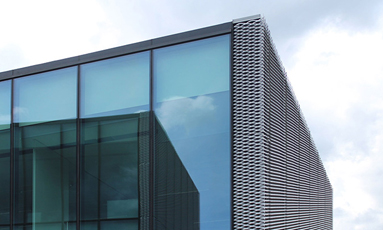Metal Bar Grating An Overview of Its Applications and Benefits
Metal bar grating is a widely utilized construction material, valued for its strength, durability, and versatility. This type of grating is made from steel, aluminum, or other metals, and is composed of a series of parallel bars that are welded or clipped together to form a grid structure. Commonly used in industrial, commercial, and architectural applications, metal bar grating has become an essential component in various infrastructure projects. This article explores the features, applications, and benefits of metal bar grating.
Design and Composition
Metal bar grating typically comes in two main styles welded and swaged. Welded grating is created by welding crossbars to the bearing bars, resulting in an extremely strong and stable structure. This type is often used in heavy-duty applications, such as walkways and platforms. On the other hand, swaged grating involves pressing the crossbars into the bearing bars to create a seamless surface. This style is lighter and is commonly used in applications where weight savings are essential.
Grating materials can vary widely, with carbon steel being the most common due to its strength and cost-effectiveness. However, aluminum grating is favored for its resistance to corrosion and lightweight properties, making it ideal for outdoor and marine applications. Stainless steel grating is also available, offering superior corrosion resistance and aesthetic appeal, making it suitable for architectural projects and facilities that require hygiene, such as food processing plants.
Applications
The versatility of metal bar grating means it has a broad range of applications. In industrial settings, it is often used for flooring, walkways, and platforms, providing safe passage while allowing for the flow of light and air. Its open design facilitates drainage, reducing the risk of water accumulation and enhancing safety on slippery surfaces.
In commercial environments, metal bar grating is commonly utilized in stairways, ramps, and security barriers. Its strength makes it suitable for high-traffic areas, where durability is paramount. In addition, its aesthetic potential can be harnessed in architectural applications, such as facades, bridges, and decorative elements, contributing to modern design while maintaining functionality.
metal bar grating

Furthermore, the availability of various finishes such as galvanized, painted, or coated options allows for customization to meet specific environmental requirements and aesthetic preferences. This adaptability makes metal bar grating a popular choice in diverse sectors, such as mining, oil and gas, power generation, and transportation.
Benefits
One of the primary advantages of metal bar grating is its strength-to-weight ratio. It offers high load-bearing capacity while remaining lightweight, which reduces the structural support required and ultimately lowers construction costs. This efficiency is vital in large-scale projects where material and labor costs are key considerations.
Another significant benefit is its low maintenance requirements. Unlike other materials that may rot, warp, or degrade over time, metal grating is designed to withstand harsh environmental conditions. Regular inspections and occasional cleaning are typically all that is needed to ensure its longevity. Additionally, the ease of installation is a major advantage, as pre-fabricated panels can be quickly deployed, saving time and labor on construction sites.
Finally, safety is a critical aspect of any construction material, and metal bar grating is designed with safety in mind. Its slip-resistant surface and open design provide excellent traction, minimizing the risk of slips and falls. Furthermore, the visibility it allows ensures users can see through to the ground below, alerting them to any hazards.
Conclusion
In summary, metal bar grating is a robust, versatile, and efficient construction material, suitable for a myriad of applications. Its strength, low maintenance needs, and safety features make it an invaluable asset in industrial and commercial construction. As industries continue to seek durable solutions for their infrastructure needs, metal bar grating will undoubtedly remain at the forefront of advanced construction practices. Whether in heavy industries or modern architectural designs, its impact is pervasive, enhancing both functionality and safety across diverse environments.
-
The Best Metal Mesh Solutions: Expanded Aluminum Metal vs. Expanded Stainless Steel Metal
NewsSep.10,2024
-
Round Perforated Sheets vs. Hexagonal Perforated Sheets vs. Embossed Perforated Sheet Metal
NewsSep.10,2024
-
Perforated Metal Sheets
NewsSep.10,2024
-
Experience The Excellence Of Stainless Steel Grating
NewsSep.10,2024
-
Discover the Versatility Of Metal Mesh Expanded Forming Machines
NewsSep.10,2024
-
Discover The Advantages Of Steel Grating For Sale
NewsSep.10,2024
Subscribe now!
Stay up to date with the latest on Fry Steeland industry news.

